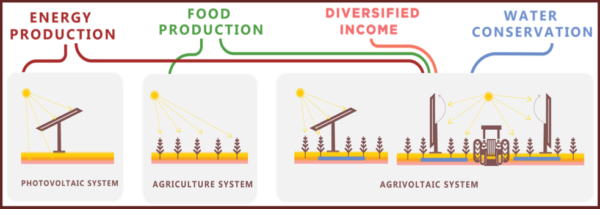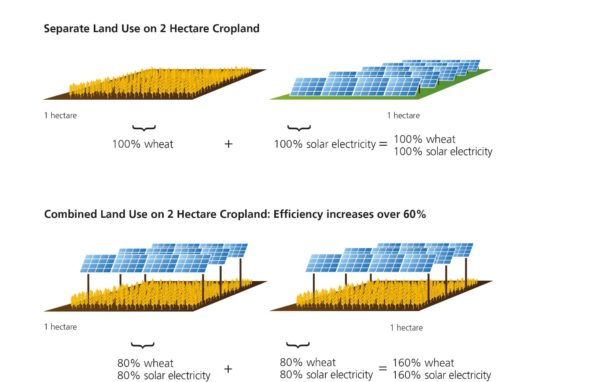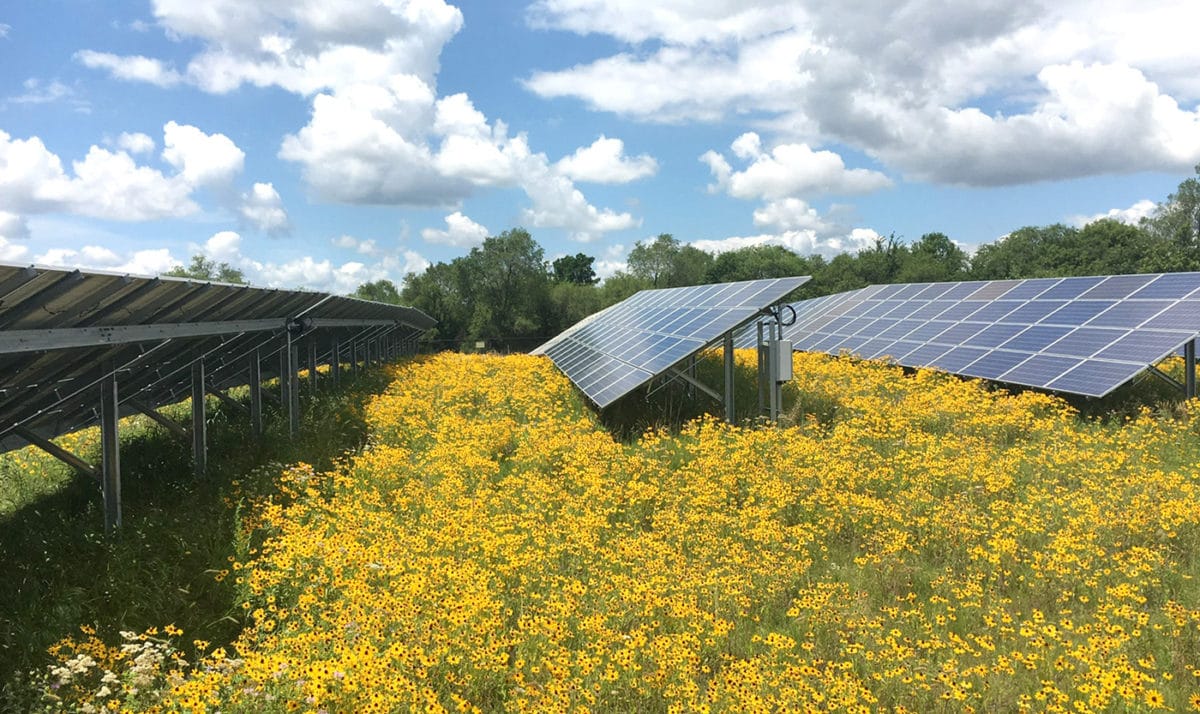The U.S. Department of Agriculture’s National Institute of Food and Agriculture awarded the University of Illinois a $10 million grant for an agrivoltaics project called Sustainably Colocating Agricultural and Photovoltaic Electricity Systems (SCAPES).
The project seeks to provide interdisciplinary scientific knowledge, along with extension and education programs, to study sustainable agrivoltaic designs in various combinations of crop species. Row crops, foraging crops (for livestock), and specialty crops all will be studied across three biophysically diverse regions of the U.S.: Illinois, Colorado, and Arizona.
SCAPES seeks to combine farm-scale economic analysis with cutting-edge field experiments. It aims to study the system-wide effects on markets and climate systems which result from various agrivoltaic configurations. The program will take a systems modeling approach to extrapolate biophysical and economic outcomes.

If the right data emerge, then professionals will likely be able to develop software tools for use in agrivoltaic project development and deployment.
The study is timely, as the rapidly falling price of solar panels has created an impetus for the construction of solar fields, which is often perceived as competing with crop production.
 Potential land use conflicts have been brewing for years in the U.S., despite emerging agrivoltaics research showing that land conflicts can be solved by co-locating solar panels with crops, thereby increasing both food and electricity production.
Potential land use conflicts have been brewing for years in the U.S., despite emerging agrivoltaics research showing that land conflicts can be solved by co-locating solar panels with crops, thereby increasing both food and electricity production.
For example, agrivoltaic research from the Fraunhofer Institute has suggested that a wheat field covered with raised solar panels would generate around 80% of the wheat that would otherwise result without panels, and roughly 80% of the electricity. However, combining food and energy production dramatically increased the net revenue output from the same piece of land.
The Illinois-led project has three objectives. The first is to engage key stakeholders — including farmers, landowners, and solar developers and their associations — to determine hypothetically optimal configurations of solar integrated with food crop production.

The second goal is to optimize design considerations based on location-specific crop productivity, resource needs, and electricity generation models. The last objective will create what are expected to be high-impact experiential educational programs integrated with research to reach students as well as farmers.
The approach will search for existing solar facilities in each region and plant C3 (for example, soybeans, spinach, and rice) and C4 crop species between panels to learn how they respond to various levels, duration, and timing of shade. C4 plants such as corn use a CO2 respiration process which improves nitrogen, water, and photosynthetic efficiency, and would likely find benefit from the shade of solar panels in only the hottest climates. C3 plants are more common, making up 95% of green plants, and typically grow more efficiently in partial shade.
Once collected, the data will be used to set up an agrivoltaic simulation model to guide the design of the three research and demonstration sites.
Three existing solar farms — Solar Farm 2.0 at Illinois, Jack’s Solar Garden at Colorado State University, and the Agrivoltaics Learning Lab at the University of Arizona — will be used to generate the initial data. The model built from these data will have a goal of representing onsite light transmission as well as water and thermal dynamics. It will then be integrated with crop growth models to guide design.
This content is protected by copyright and may not be reused. If you want to cooperate with us and would like to reuse some of our content, please contact: editors@pv-magazine.com.








In addition to just seeing what grows acceptably with the solar panels, impacts to planting and harvesting methods also need to be explored.